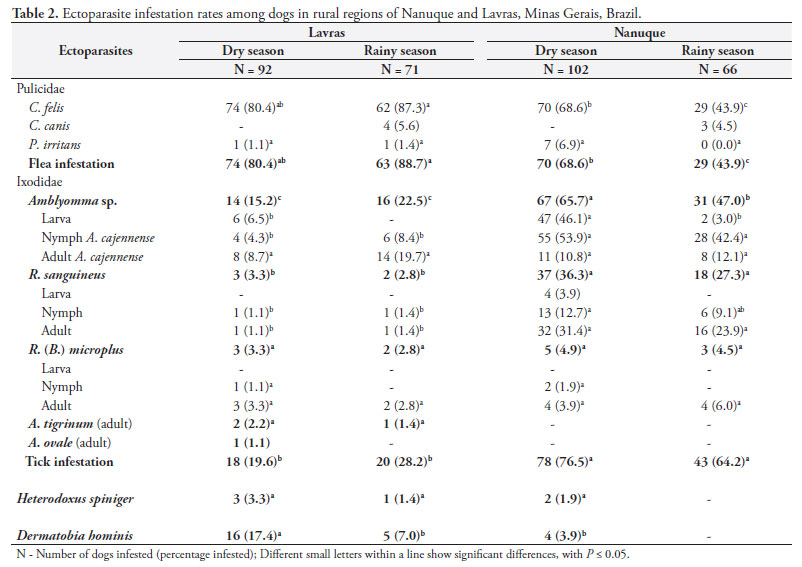The present study examined occurrences of ectoparasites and identified them on dogs in rural regions in Brazil, and assessed the influence of climate on these parasites. Ectoparasites were randomly collected from 194 dogs living on farms located in Lavras (n = 92) and Nanuque (n = 102) during the dry season. During the subsequent rainy season, the same dogs in Lavras (n = 71) and Nanuque (n = 66) were resampled. During the experiment, fleas, ticks, lice and fly larvae were collected. The flea species Ctenocephalides felis was the most common ectoparasite collected from these dogs. The main tick species that infested the dogs in rural areas of Nanuque and Lavras was Amblyomma cajennense. In Lavras, the dogs had high levels of flea infestation (80.4 and 88.7% in the dry and rainy seasons, respectively) and low levels of tick infestation (19.6 and 28.2% in the dry and rainy seasons, respectively), without any significant differences in infestation rates between the seasons. In Nanuque, moderate levels of flea infestation (68.6 and 43.9% in the dry and rainy seasons, respectively) and A. cajennense (65.7 and 47.0% in the dry and rainy seasons, respectively) were observed, with significantly lower prevalence in the rainy season (p < 0.05). The presence of ectoparasites was evident at both times of the year, but the different temperatures may have influenced the occurrences of parasites in Lavras and Nanuque.
Ectoparasites; tick; fleas; dog; rural regions; Brazil



